Aquarium Photography Tips
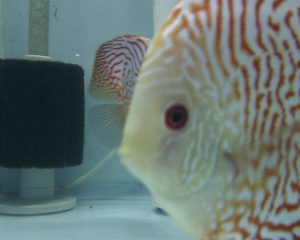
Blue Panda Discus
Do you want to take high-quality photos that capture the grandeur of your discus aquarium? Here are tips from the experts!
- Invest in a high-quality camera to produce high-quality photos. Excellent camera companies include Canon, Sony, Olympus and Nikon.
- Although they cost more than point-and-shoot cameras, single lens reflex (SLR) cameras are the best for taking photos of aquariums since they can take fast photos in places with low lighting.
- Thoroughly clean your tank before taking photos.
- Use the best filtration system as possible. Run a diatom filter for several hours before you begin taking photos.
- Use very strong lights above your tank’s hood.
- If your photos are blurry because of poor lighting, increase your camera’s ISO setting. Be sure to keep your camera very still when using the high ISO setting. You may want to use a tripod.
- Experiment with using the “macro” mode on your camera. It can help you sharpen close-up photos.
- Use high-quality photo editing software. Photoshop Elements 11 and Adobe Lightroom 4 are easy to use and will improve your photos.
- Don’t try to follow your moving fish by moving your camera and blurring your photos. Instead, focus your camera on only one location and wait for your fish to swim into your focus zone.
- Photograph your fish right before their mealtime. At this time, fish are very active. Since they want food, they will swim right up to your aquarium’s front.
- Sometimes, fish are afraid when they see your camera and will hide at the back of their tank. If they do that, drop some food at the front of their tank. Try using some live foods, such as worms or brine shrimp.
- Shallow and narrow tanks are best for taking fish photos. To achieve the most excellent photos possible, use a separate tank only for fish photos.
- Place your camera as close to the tank’s glass as possible. Consider using a rubber lens hood on your camera so that you can press your camera right up to the glass. Due to the rubber lens, glares from flash will decrease.
- If your camera has a flash, take your photos at angles to reduce it.
- Since discus might be frightened if you’re wearing brightly colored, patterned clothing, wear dark, solid clothing. Doing so will also reduce your chances of being shown in the camera’s reflection.
- Turn off air pumps and filters when taking photos. You want to keep the water calm.
- Use an external flash far from the camera lens to reduce the possibility of your reflection appearing in your photos.
- Use an aquarium background to hide extension cords, filters, and other appliances from your photos. You have a few creative options. You can purchase an aquarium background, paint the back side of the outside of the tank, or paint some heavy duty cardboard or paper to place behind your tank.
- A camera with fast shutter speeds will help you to capture your fish’s quick movements.
Keep trying different techniques until you see what works best for you. It might take a long time and a lot of effort to master discus photography, but it’s definitely worth it once you are capturing your discus’ beauty!

Albino Yellow Leopard Discus
QUESTIONS
- What types of photos would you like to take of your discus?
- What are different things that your discus do that you want to capture on film?
- What sorts of backgrounds or tanks do you want to use for your discus photos?
- What type of camera will help you to take your best discus photos?
- What are your goals with discus photography?




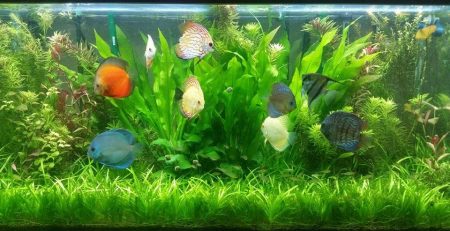
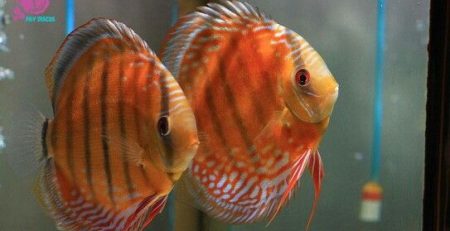
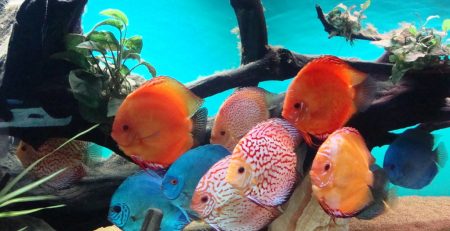
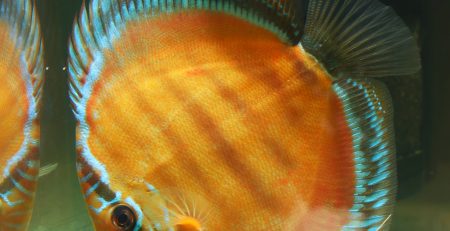
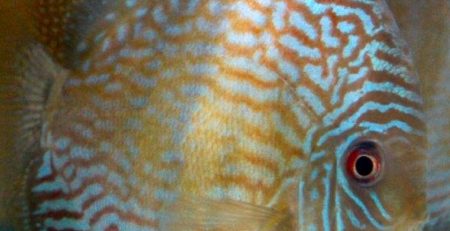

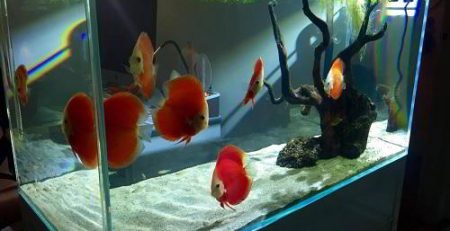

Leave a Reply
You must be logged in to post a comment.